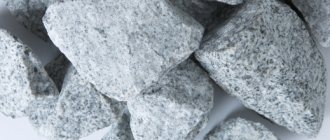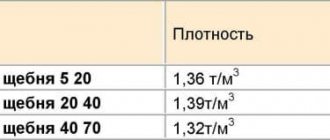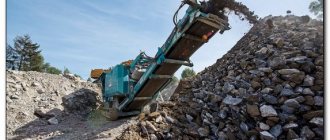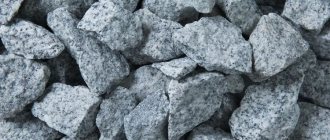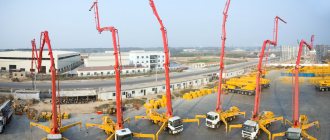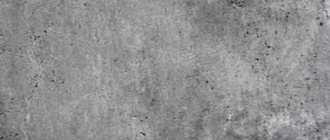Recycled crushed stone. Photos of Soil Trucks
Crushed stone is a bulk material obtained in most cases by crushing rocks . As a result of processing on special equipment, types of crushed stone that are in demand in various fields of activity are produced, some of them: gravel, granite, limestone, dolomite, quartz and slate, marble, expanded clay and agloporite. other raw materials and technologies are often used for production Some varieties can be classified as so-called “artificially created”, that is, not produced from raw materials of natural origin: foam glass, slag, recycled, to some extent black and colored crushed stone. This article is devoted to one of these types - secondary crushed stone.
What is it, production process, processing
Recycled crushed stone is a material that is not of natural origin and is obtained by crushing construction waste. Three types of materials are suitable for processing : concrete products, structures and blocks, asphalt chips and broken bricks. The production of secondary crushed stone in most cases is carried out at the site of work on the destruction of buildings or roads. Large fragments of waste are crushed with a hydraulic hammer or hydraulic shears, or sent to a crusher, in which crushing is carried out, but into crushed stone fractions of the required size: 5-20, 20-40, 40-70.
By the way. For processing, the same crushing and screening equipment is used that is used for the production of natural crushed stone.
During the production process, the mass is cleared of debris and unnecessary inclusions: fittings, wood, glass. As a result, secondary crushed stone is visually in no way different from materials of natural origin. But a comparison of the characteristics allows us to conclude that recycled crushed stone is inferior to its natural counterparts in some respects:
- frost resistance - the number of freezing and thawing cycles that the material can withstand without significant losses in weight, the minimum indicator for recycled materials is only 15, but there are products for which the value is 200, the indicator is denoted by the Latin letter “F”;
- the strength of crushed concrete is worse than that of products made from natural raw materials - grades M300-M600;
- flakiness, i.e. the number of needle-shaped and plate-shaped particles, measured as a percentage, averages 20-25%;
- true density averages 2000 kg/cub.m., bulk density - 1250;
- radioactivity is determined by the amount of radionuclides; secondary crushed stone may belong to the first or second classes.
Reference. Characteristics may vary significantly; the parameters depend primarily on the type of feedstock.
An alternative method for producing the material is to recycle used granite crushed stone removed from railway tracks. Such products have greater strength and frost resistance. But not all enterprises have the opportunity to operate (purchase or rent) mobile equipment. As a result, granite is not processed on site, but is transported to the production site, which leads to an increase in the cost of producing the material.
Reference. A fairly large number of secondary crushed stone producers operate successfully in Russia: First Nonmetallic Company, National Nonmetallic Company, Eco-crushed stone, Uralasbest.
Advantages and disadvantages of crushed material: the cheapest and not only
Recycled crushed stone has a wide range of advantages, among which the most important are the following:
- low cost, this positive property is also inherent in crushed slag stone, which is also produced from waste;
- a fairly low cost ensures a reduction in the cost of performing work; most often, recycled crushed stone is used to meet construction needs;
- wide scope of application;
- economical production process;
- the characteristics of recycled crushed stone are comparable to some types of natural materials, in particular, with the parameters of limestone products.
Reference. The use of waste for production also has a positive effect on the environment due to the reduction in the number of construction landfills.
The disadvantages of recycled crushed stone include:
- low strength, which does not at all prevent the use of the material as a filler for reinforced concrete structures;
- low resistance to low temperatures;
- poor wear resistance, which does not allow the use of recycled crushed stone in the construction of road surfaces, which during operation will experience significant loads: federal highways, city squares and streets;
- Some clients find the appearance of recycled crushed stone not very attractive, which can be corrected by applying a finishing coating; painting provides a colored decorative material.
Reference. It should be remembered that the indicators depend on the type of feedstock and can vary significantly.
Cooking features
To obtain the final material, its components are mechanically mixed. This procedure must be carried out in dry and heated rooms. In this case, the optimal ratio of sand and salt is 70% and 30%, respectively. Other proportions are possible, but the latter must be at least 10% in the final product. Its quantity determines the melting capacity. The ratio of components in the prepared mixture depends on temperature, air humidity and thickness of the ice.
Sand is considered one of the most common materials on the planet. It covers 20% of the land, which is 7% of the Earth's surface.
Fractions and areas of application: screening, 40-70 and more
- screenings measuring 0-5 mm. used in the manufacture of concrete as an alternative to sand, to level the level of the territory;
- fine fraction 5-20 is used for the production of concrete mortars and reinforced concrete products;
- the middle fraction 20-40 is intended for filling pedestrian paths, secondary roads and parking lots, when arranging drainage systems and foundations for the road surface;
- coarse fraction 40-70 is intended for filling roads on marshy soils, during the construction of parking areas for trucks and special equipment, and is suitable for strengthening moving soil layers during the construction of buildings.
According to GOST, recycled crushed stone is allowed for use as backfill for utility networks. The material is also used when pouring floors in industrial premises : warehouses, workshops, etc.; for decoration : forming garden and park paths, creating alpine towns and dry streams, filling the bottom and banks of reservoirs, buildings for various purposes.
Types: concrete and others
Depending on the type of feedstock, there are three types of recycled crushed stone:
1) Concrete , obtained by processing reinforced concrete slabs, blocks, products and structures. The characteristics of the material are not significantly inferior to some types of natural crushed stone, but fully meet the requirements of the standards. Low cost ensures high demand. It is advisable to use crushed concrete in cases where there is no need to use higher quality products.
Reference. Often concrete crushed stone is called “secondary”.
2) Asphalt or asphalt is the best option for road construction. Crushed stone is produced by crushing large fragments of asphalt (asphalt chips) and dividing it into fractions. Crushed asphalt contains bitumen, which compacts well. As a result, after rolling it is possible to obtain a smooth and durable sheet that does not require a finishing coating. An important advantage is that laying crushed stone does not require a foundation. The material is used for filling holes, for decluttering the top layer of road surfaces, for filling and constructing roads in cottage villages and construction sites.
3) Crushed brick is characterized by low strength, so it is suitable for filling temporary parking lots and roads, constructing drainage systems, arranging heat and sound insulation, and producing mortars that do not have high strength requirements. The advantage of the material is its affordable cost, which may differ depending on the type of brick used as the raw material: fireclay clay, silicate, etc.
Brick fight
Broken bricks are formed during the dismantling of old buildings, which are usually smashed with a mechanical hammer. Brick defects are obtained during the production of bricks, which are then sold at a large discount. The resulting material is used for various purposes, one of which is repairing or filling roads, this is especially true for country roads with potholes and mud in bad weather. Before filling a temporary road, it is advisable to crush the broken bricks using special mechanisms so that the size of the fragments is approximately the same.
What is the advantage of such material? Brick contains clay, which perfectly absorbs moisture. In the soil, crushed broken brick adheres perfectly to wet soil, water does not stagnate in it, the surface is rough, on which car wheels will not slip. The priority is given to the destruction of white silicate brick; it is more resistant to various damages. The layer of broken bricks must be provided in advance; in different cases it may be different. If this is an entrance to a construction site where heavy trucks will move, then the thickness of the backfill from broken bricks should be accordingly. If we are talking about a summer cottage where cars will drive, then the thickness of the crushed brick may be less.
After filling the working surface with broken bricks, it must be rolled either with a roller or with heavy machines.
Comparison of crushed concrete with materials of natural origin
Granite crushed stone 25-60. Photos of Soil Trucks
Two types of crushed stone of natural origin are in greatest demand - gravel and granite. When comparing the main characteristics of materials, the following conclusions can be drawn:
- In terms of strength, secondary is inferior to both gravel (on average 1.5 times) and granite (2.5-3 times);
- the flakiness of secondary and gravel is approximately the same, granite is a little better, 15-20 versus 20-25%;
- frost resistance, average indicators of secondary crushed stone are several times inferior to the parameters of granite and gravel;
- in accordance with the radioactivity indicator, crushed gravel is the leader, secondary is in second place, and granite is in third;
- bulk density varies slightly: 1.25 (secondary); 1.30 (gravel) and 1.4 (granite).
Asphalt crumbs
After removing the asphalt from the used road surface, it is crushed and put back into use. The presence of resins and bitumen in the composition promotes good adhesion with other ingredients of the road surface. It is a worthy alternative to recycled crushed stone. This coating is quite comfortable for pedestrians and cars and will last a relatively long time.
